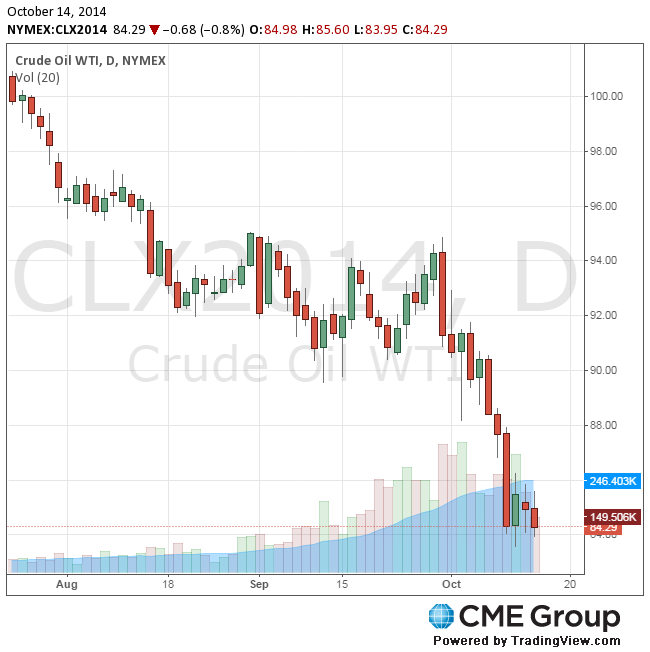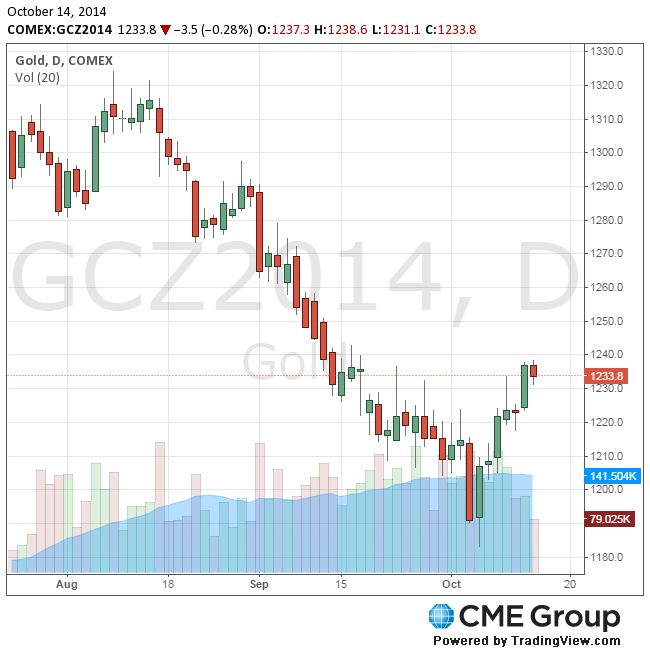Notícias do Mercado
-
16:40
Brent crude fell to the lowest level in almost four years
Brent crude fell to the lowest level in almost four years after the International Energy Agency said oil demand will expand this year at the slowest pace since 2009. West Texas Intermediate slipped for the fifth time in six days.
Futures dropped as much as 3.1 percent in London and 2.1 percent in New York. Oil consumption will rise by about 650,000 barrels a day this year, 250,000 fewer than the prior estimate, the Paris-based agency said in its monthly market report. U.S. crude supplies probably grew by 2.5 million barrels last week, according to a Bloomberg survey of analysts before a report from the Energy Information Administration on Oct. 16.
Oil futures have collapsed into bear markets as shale supplies boost U.S. output to the most in almost 30 years and global demand weakens. The biggest producers in the Organization of Petroleum Exporting Countries are responding by cutting prices, sparking speculation that they will compete for market share rather than trim output. Saudi Arabia won't alter its supplies much between now and the end of the year, a person familiar with its oil policy said on Oct. 3.
"The IEA report is killing Brent," Bob Yawger, director of the futures division at Mizuho Securities USA Inc. in New York, said by phone. "This is the fourth month in a row where they've cut their demand forecast. There's tremendous downside risk for the market."
Brent for November settlement declined $2.54, or 2.9 percent, to $86.35 a barrel on the London-based ICE Futures Europe exchange at 10:24 a.m. in New York. It slipped to $86.17, the lowest intraday price since Dec. 1, 2010. The volume of all futures traded was 68 percent above the 100-day average for the time of day. Prices have decreased 22 percent this year.
WTI for November delivery dropped $1.71, or 2 percent, to $84.03 a barrel on the New York Mercantile Exchange. The contract settled at $85.74 yesterday, the lowest close since December 2012. Volume was 72 percent higher than the 100-day average. The U.S. benchmark grade traded at a $1.96 discount to Brent, down from $3.15 at yesterday's close.
The IEA reduced its estimate for demand growth this year for the fourth month in a row, meaning oil consumption will expand by about half the rate of 1.3 million barrels a day anticipated in June. The IEA cut its 2015 demand growth forecast by 100,000 barrels a day to 1.1 million. About 200,000 barrels a day less crude will be needed from OPEC this year and next than estimated previously, the agency said.

-
16:20
Gold prices are close to 4-week high
Gold traded near a four-week high, as the current concern about the global economic outlook and the decline in the stock markets support the demand for safe assets.
On Monday, the American and European indices showed a decline on concern about the weakness of the world economy, while a growing concern about the spread of Ebola also exert pressure.
Meanwhile, traders continue to speculate on the timing of rate hikes in the United States after the September Fed meeting minutes, published last week, showed that some officials are concerned about the impact of the strong dollar on global growth and inflation prospects in the United States.
Protocol prompted investors to revise expectations of the Fed rate at a later date.
The slowdown in interest rates can support gold, as it lowers the relative cost of the metal retention, which guarantees investors a profit.
"Our products are backed by gold stock for the first time over the last month received inflows as minutes of the meeting of the Committee on the work of the Federal Open Market caused weakening of the dollar and weak data in Germany stimulated interest in safe assets," - said the director of ETF Securities in Australia and New Zealand Danny Leydler .
The world's largest reserves of the gold-exchange-traded fund SPDR Gold Trust on Monday rose by 1.79 tons, it has become the most significant increase from September 10.
The cost of the December gold futures on the COMEX today dropped to 1231.10 dollars per ounce.

-